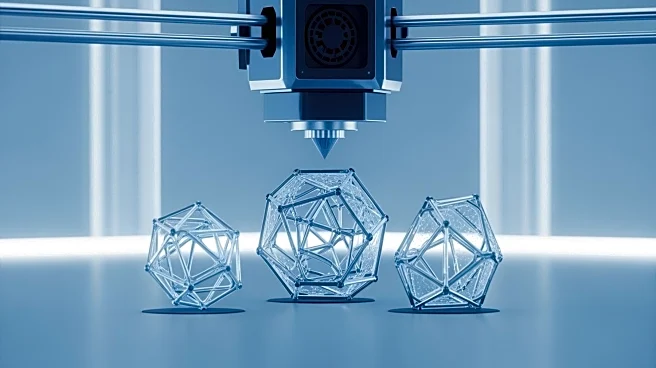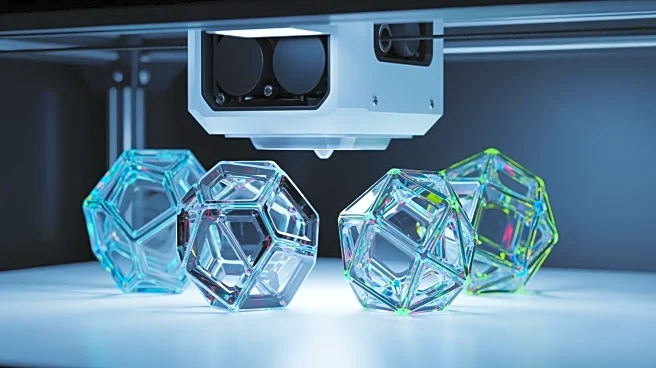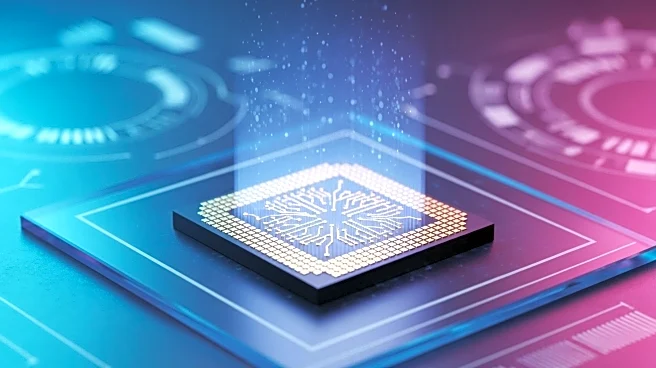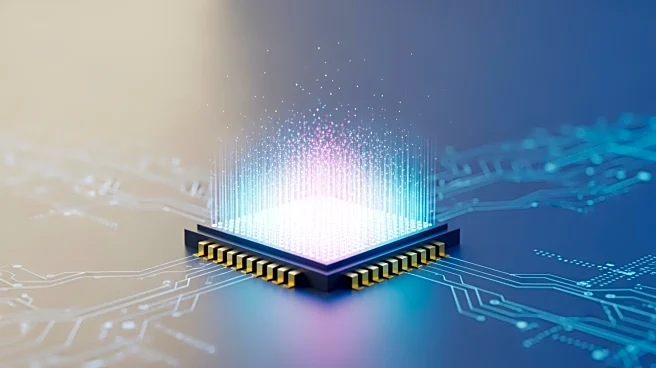What's Happening?
Researchers have developed 3D-printable photochromic materials that can be used to create all-optical processors. These materials, made from bisphenol A ethoxylate dimethacrylate and photoinitiators, exhibit
color changes when exposed to UV light, allowing for dynamic control of light propagation. The study demonstrates the potential for these materials to perform arithmetic operations and encode data, offering a new approach to optical computing. The materials show high stability and can be used for encoding and data storage applications, with the ability to revert to their original state using green light.
Why It's Important?
The development of 3D-printable photochromic materials represents a significant advancement in optical computing technology. This innovation could lead to more efficient and faster processing systems, reducing reliance on traditional electronic components. The ability to perform calculations and store data using light offers potential benefits for industries requiring high-speed data processing and storage solutions. Additionally, the environmental impact of computing could be reduced, as these materials offer a sustainable alternative to conventional electronic devices.
Beyond the Headlines
The use of photochromic materials in optical processors could revolutionize the way data is processed and stored, leading to new architectures and capabilities in computing. This technology may also pave the way for advancements in quantum computing and other emerging fields. Ethical considerations regarding data privacy and security will need to be addressed as optical computing becomes more prevalent. The long-term implications of this technology could include shifts in industry standards and the development of new regulatory frameworks.












